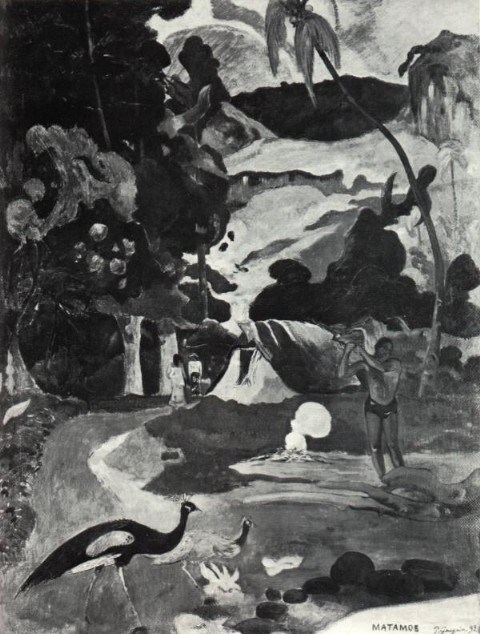

"Man and His World International Fine Arts Exhibition Expo 67 Montréal Canada" by Pierre Dupuy © the Canadian Corporation for the 1967 World Exhibition and the National Gallery of Canada
| Paul Gauguin. 1848-1903
"Matamoe" Landscape with Peacoks. 1892 Paul Gauguin spent part of his early childhood in Peru. He was at sea in the merchant marine or navy for six years, settled down in Paris at the age of twenty-three as a stockbroker's apprentice, married, prospered, became a Sunday painter who exhibited at the Salon in 1876 and a collector who bought works by Cézanne and the Impressionists. Gradually he broke away from his conventional responsibilities to devote himself to painting and in 1891, at the age of forty-three, he went to Tahiti. Although he returned to Paris in 1893 and stayed until 1895, the rest of his life was spent in the South Seas; he died in the Marquesas. Gauguin, who could seem irresponsible and even cruel, was nevertheless a speculative man, philosophical, concerned with religion. His very restlessness was a search for a paradise, a world in which man and nature would be in such harmony that the second coming of Christ would not be an impossibility. This painting, Matamoe, which he painted on his first trip to Tahiti, shows his enjoyment of this exotic Eden with peacocks, palm trees and strange colours floating together mesmerizingly. It is quiet, protected, cool, but the palm tree on the right lifts our eyes to more exalted, light-filled mountains and sky. |